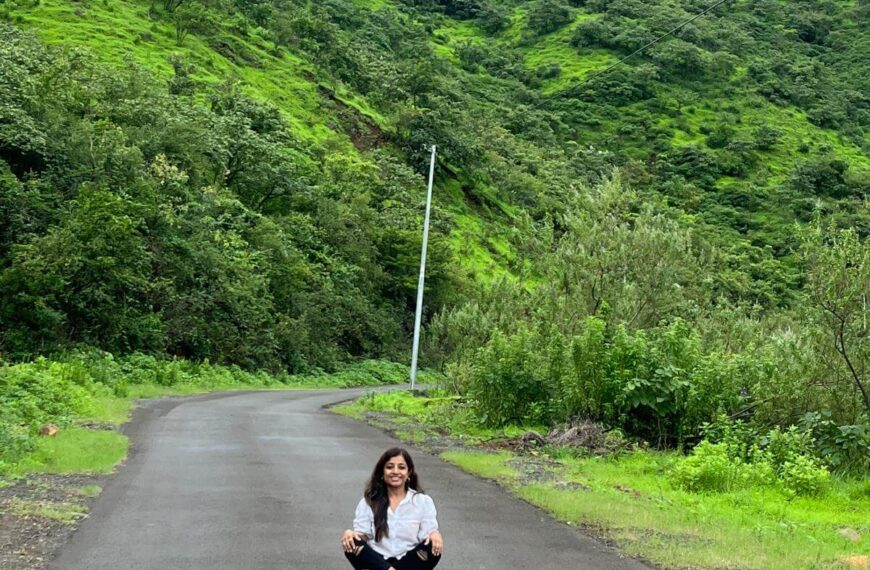Dr Roopali takes us on a tour of Penang, Malaysia. She explores its cultural traditions, cuisines, and street art, along with its sites and sounds – exclusively for Different Truths.

George Town, Penang is a UNESCO World Heritage city. Everybody seems to live here or visit this colonial city in Malaysia, located on the island of Penang.
It’s known for being Malaysia’s gastronomic capital. Its hawker street food is a huge attraction. And we are foodies. So, naturally, it was the best city for us.
In 2006, UNESCO World Heritage status was awarded to the historic cities of George Town and Melaka. George Town is also a city where culture and unique street art co-exist.
Street Art
The street art is so accurate it seems to walk right out to you or includes you as part of it. Special tours trail street art – especially the painting of the girl on a bicycle.
Rainforests, seashores, and temples await you. And then there are those factories where exquisite batik printing takes place. Here you can shop for the real deal. You can try your hand at batik, too!
Our son’s colleague recommended a scholarly cab driver with an outstanding reputation. We were told he was very polite and informed and would show us around. We promptly hired him.
Mister Munnukrishnan (name changed) picked us up from our small heritage hotel.

Mister Munnukrishnan (name changed) picked us up from our small heritage hotel. We complimented him for his fame, the reason why we had hired him. We were hoping this would help soften him up and lower the fare.
He broke into a big teeth-filled smile and began talking. He talked and talked and talked and talked. His pronounced Tamil accent made us feel at home.
But he didn’t feel at home with us. He avoided any mention of India. Born and raised in Penang, with immigrant ancestors, he was a Penangite.
He drove at breakneck speed past fabulous colonial buildings. Hurriedly he told us stories we had no way of confirming. Slowly the hammering in our heads began.
We whizzed past houses with Mister Munnukrishnan’s gory stories of murder and poison potions. He recounted illicit love affairs between mistress and butler and abandoned inheritances now only occupied by ghosts.
Aquamarine Sea
He landed us on a beach with the aquamarine sea lapping the shore. A food court with a large Starbucks drove us berserk. The headache had to go. Only Starbucks coffee could do that.
Hail, America!
George Town has a sizeable Tamil population. Mister Munnukrishnan recounted his family history. They were Tamilians who followed all Tamil Hindu rituals but had never been to Tamil Nadu or even to India.
It was 200 years and more since his ancestors arrived here. Penangite Indians are also known as Chulias.
It was 200 years and more since his ancestors arrived here. Penangite Indians are also known as Chulias. They are Malaysian Indians that live primarily in the state of Penang. Most are the descendants of those who migrated from India during the British colonisation of Malaya. Chulia Street was one of the earliest streets in George Town and had a multicultural character.
Later in the day, at the famed Buddha temple, I met a Tamil family who struck up a conversation with me. Soon we became pretty friendly. Something inexplicable saddened me.
Rajashree, the young Tamil woman, was wearing a printed synthetic sari. She looked every bit a familiar Tamil person. She was born and brought up here in Penang. They didn’t particularly long to go to India. She said they had no connections or relatives in Madras (Chennai). And they hardly had any money.
She held my hands …. Does one’s piece of the earth call out?
Something stirred deep inside me. I offered this stranger, this lovely middle-aged woman with an apparent Indian heritage, the chance to see her roots. I would fly her to Chennai, I said and would show her around. She held my hands to her eyes and let the tears fall. Does one’s piece of the earth call out?
The Penang-Hill Railway
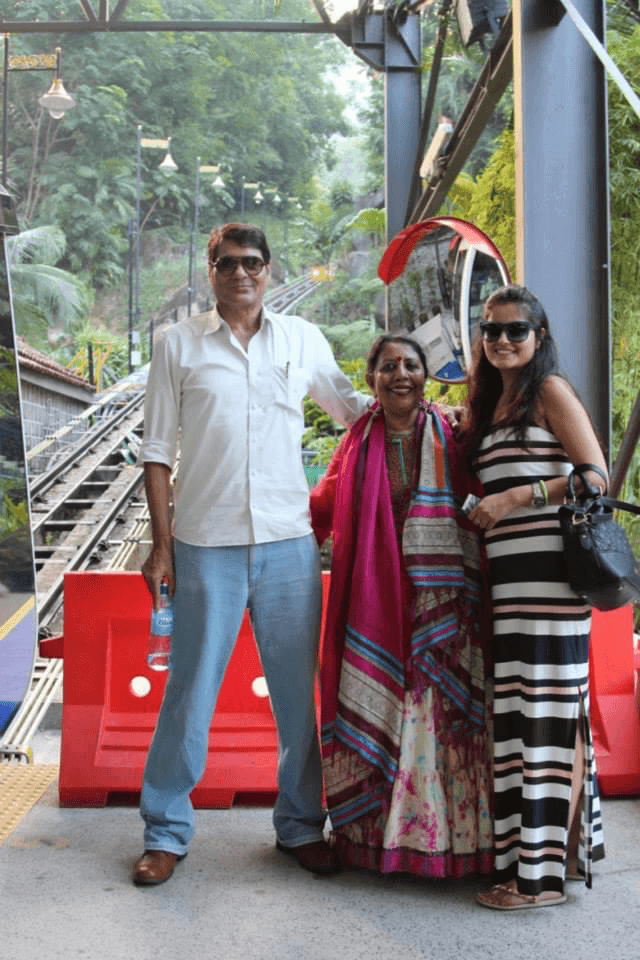
Later that day, we rode the Penang-Hill Railway. It is a one-section funicular railway that climbs Penang Hill from Air Itam, on the outskirts of George Town. The funicular train was an unforgettable experience.
It took us almost vertically through the rainforest to a beautiful hilltop view of Penang at an astonishing speed. The technology involved is fascinating.
Funicular derives from the Latin word funiculus, which means “rope”. In olden times, humans or animals powered the rope cables in the funicular loop system of the train.
The funicular system pulls trains up steep grades with a cable (the funiculus). With this cable, the steel wheels primarily guide the train along the tracks on steep inclines.
The trains are lovely, but we mustn’t forget we were in Penang for its famous street food!
The trains are lovely, but we mustn’t forget we were in Penang for its famous street food! It boasts such variety that one must spend considerable time there to enjoy the foodies’ paradise.
Colonial Cusine, Asian Food
Formerly occupied multi-family homes called Long Houses now function as tastefully done restaurants. Here the clientele is offered colonial cuisine as well as Asian food, cakes, and desserts.
Having eaten our fill, we took a ride in a colourful trishaw. A trishaw or “beca” is a three-wheeled rickshaw where the driver rides in the rear. He propels the vehicle by pedalling—the cab in the front just large enough to seat two adults.
Our trishaw took us to the Clan Jetties, six complete floating villages on stilts.
Our trishaw took us to the Clan Jetties, six complete floating villages on stilts. In the 19th century, Chinese immigrants came to Malaysia and created clans to survive in the new environment.
Typically, each Jetty belongs to a one-family clan, with dozens of wooden houses on each pier. Tourists are welcome and are free to stroll about the wooden docks.
Chew Jetty
Chew Jetty is the only pier open to the public and is the oldest and largest Clan Jetty. In the mid-19th century, Chew Jetty was built. As the clan grew, more houses were added, pushing the Jetty further out to sea. Today, there are 75 houses and around 600 residents.
Mr Munnukrishnan, despite our friendliness, started looking at his watch.
Mr Munnukrishnan, despite our friendliness, started looking at his watch. He drove us mindlessly over miles of highway across the sea, and a promised scheduled cruise ride was cunningly shelved.
Finally, he brought us back to the hotel, charged us a hefty amount and took off. But not before letting us know that the Chinese feared the Tamils. Especially when they dressed up in tiger and monkey skins and took out processions leaping about the streets to the sound of drums; for us, he left behind a rich tapestry of people and places and the gift of a city.
The Blue Mansion
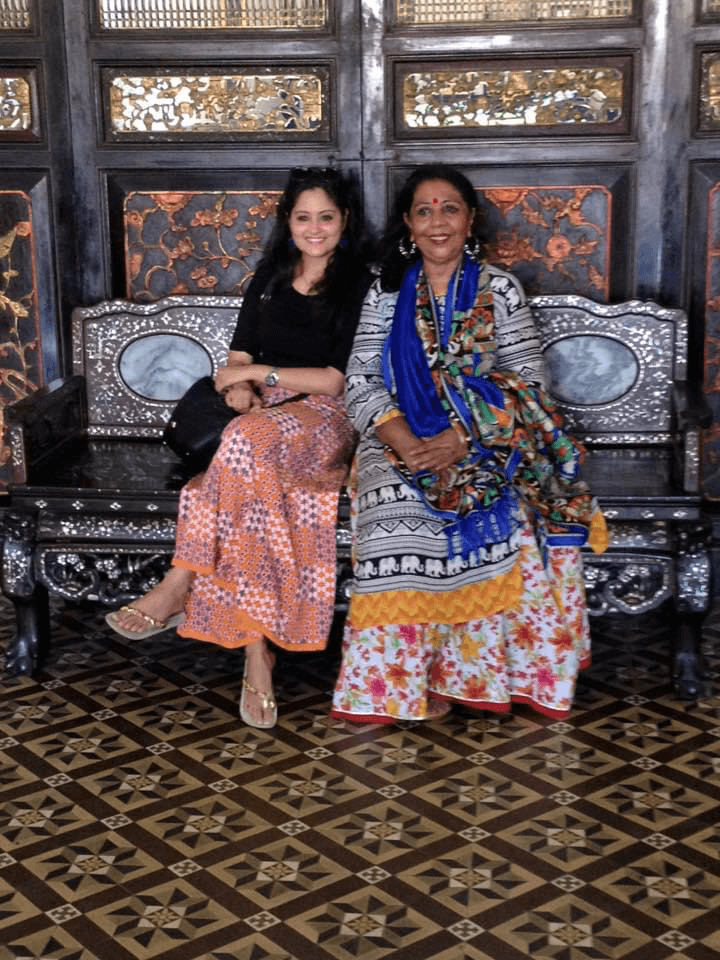
We took the local rickshaws the next day and saw the famed Cheong Fatt Tze. The Blue Mansion. The mansion’s exterior decorations and indigo-blue outer walls make it a distinctive building.
Built by the merchant Cheong Fatt Tze in the late 19th century, the mansion has 38 rooms …
Built by the merchant Cheong Fatt Tze in the late 19th century, the mansion has 38 rooms, five granite-paved courtyards, seven staircases, and 220 vernacular timber louvre windows.
We had to wait restlessly for a while before a stylish lady appeared. The motley crowd of American and Japanese tourists crowded around her. My daughter-in-law and I sat on an ornate bench in the main entrance hall.
Today we were indeed not allowing ourselves a Munnukrishnan kind of headache.
I couldn’t follow the fancy lady guide’s fast-paced recounting of the nonexistent grandeur of the place.
I couldn’t follow the fancy lady guide’s fast-paced recounting of the nonexistent grandeur. After Mister Munnukrishnan’s performance, bear the continuous talking. There seemed to be some humour.
Once the group climbed after her onto high wooden stairs, we took a stroll below.
This building left us tired and unimpressed from India – a country with the most incredible architecture and palace homes.
The rickshaw rides back cost a pretty penny. The street art area satisfied our craving for something different and attractive. We shopped for t-shirts and souvenirs.
War Museum
The island of Penang has many exciting places to visit. Recreated histories of colonial past, Japanese occupation, ethnic clashes, and stories of immigrants and exploitation. An open war museum spread over 22 acres is replete with ghost stories and recreated scenarios.
It was once the actual site of battle and occupation. More entertaining than proven historical evidence, it still has stories to tell.
… “History is written by the victors, as they say… but ghost stories offer a voice to otherwise disenfranchised groups…”
In his excellent essay on the Penang War Museum, British writer and researcher Darmon Richter say, “History is written by the victors, as they say… but ghost stories offer a voice to otherwise disenfranchised groups. The modern folklore of Penang constitutes a version of History built not from records – from dates, names, and numbers – but rather, one infused with cultural memory and common fears.”
Darmon Richter’s work focuses on the intersection of architecture and culture.
Peranakan Baba-Nyonya Cuisine
We walked down a hawkers’ street to try some Peranakan Baba-Nyonya cuisine. This fascinating cuisine combines Chinese, Malay, Javanese, and South Indian influences.
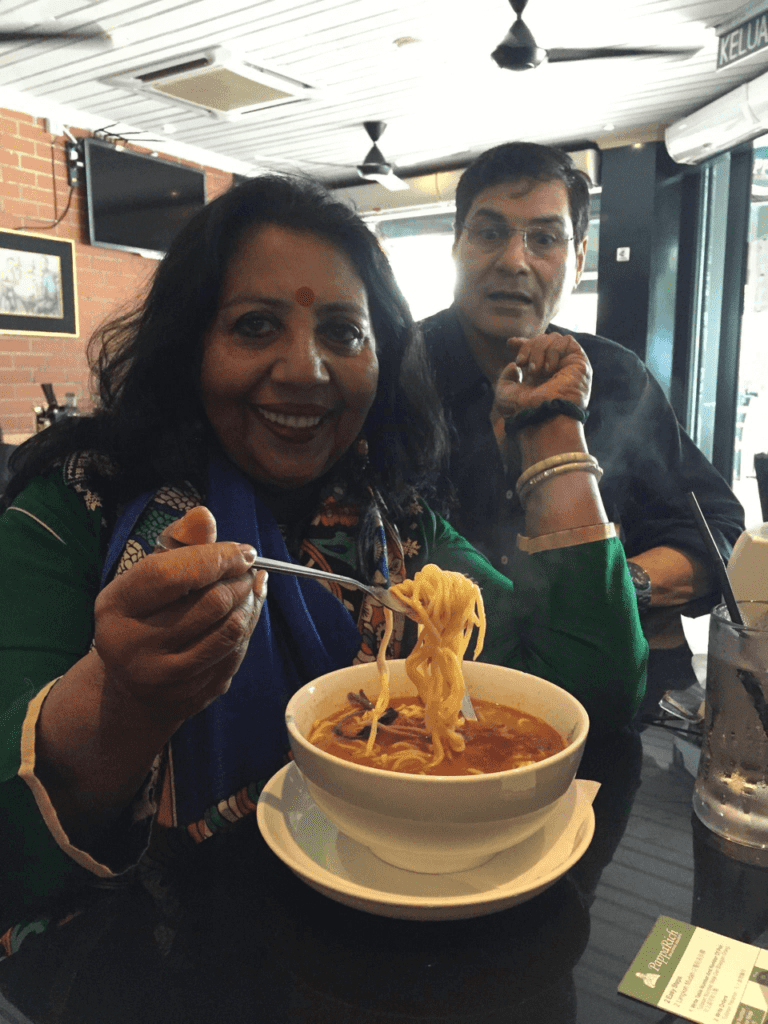
The Peranakan are an ethnic group that traces their genealogical descent from the first waves of Southern Chinese settlers …
The Peranakan are an ethnic group that traces their genealogical descent from the first waves of Southern Chinese settlers to maritime Southeast Asia. Their descendants in Penang are referred to as Baba-Nyonya.
Peoples, journeys, trials, tribulations, joys, and celebrations fuse as human History progresses.
No travel is complete until you taste it.
Photos by the author

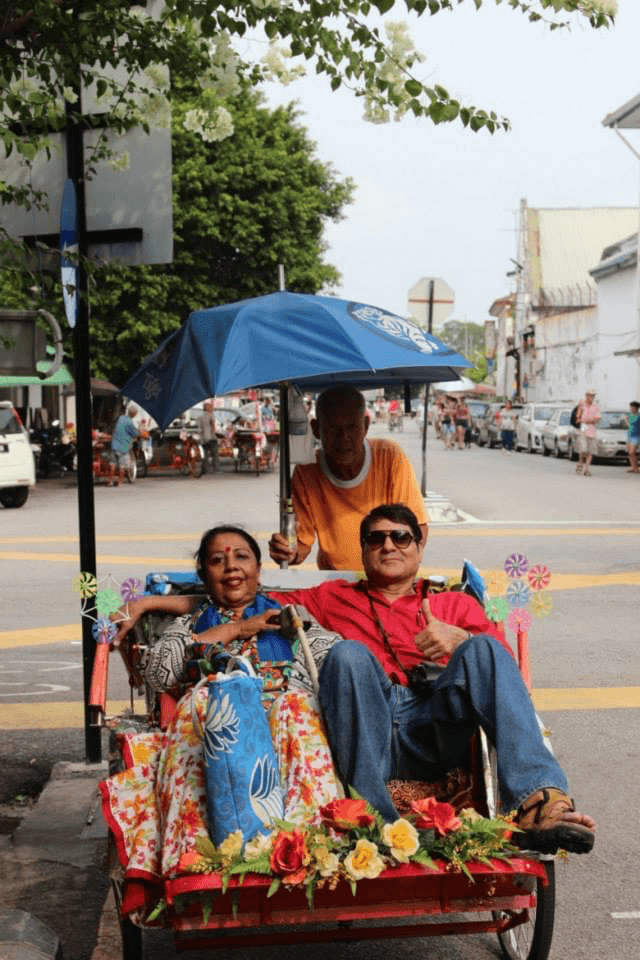



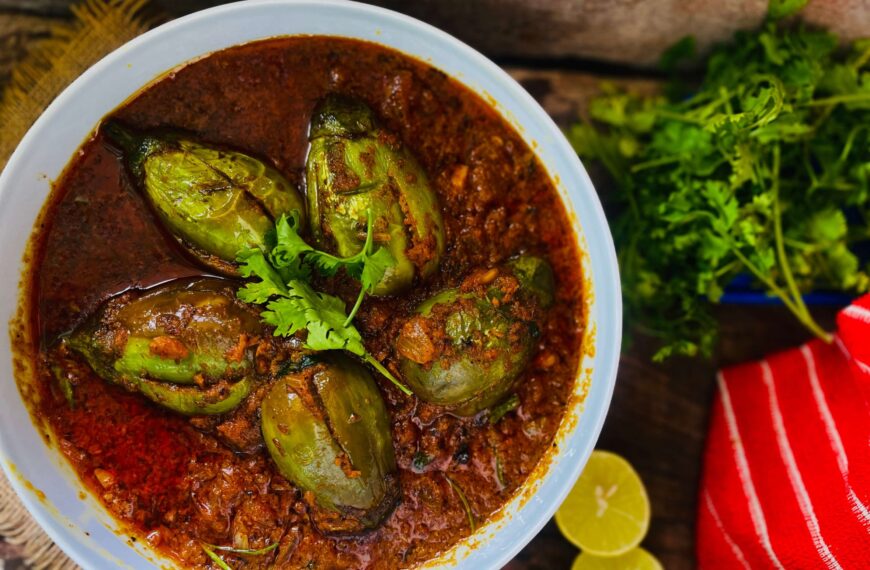

 By
By